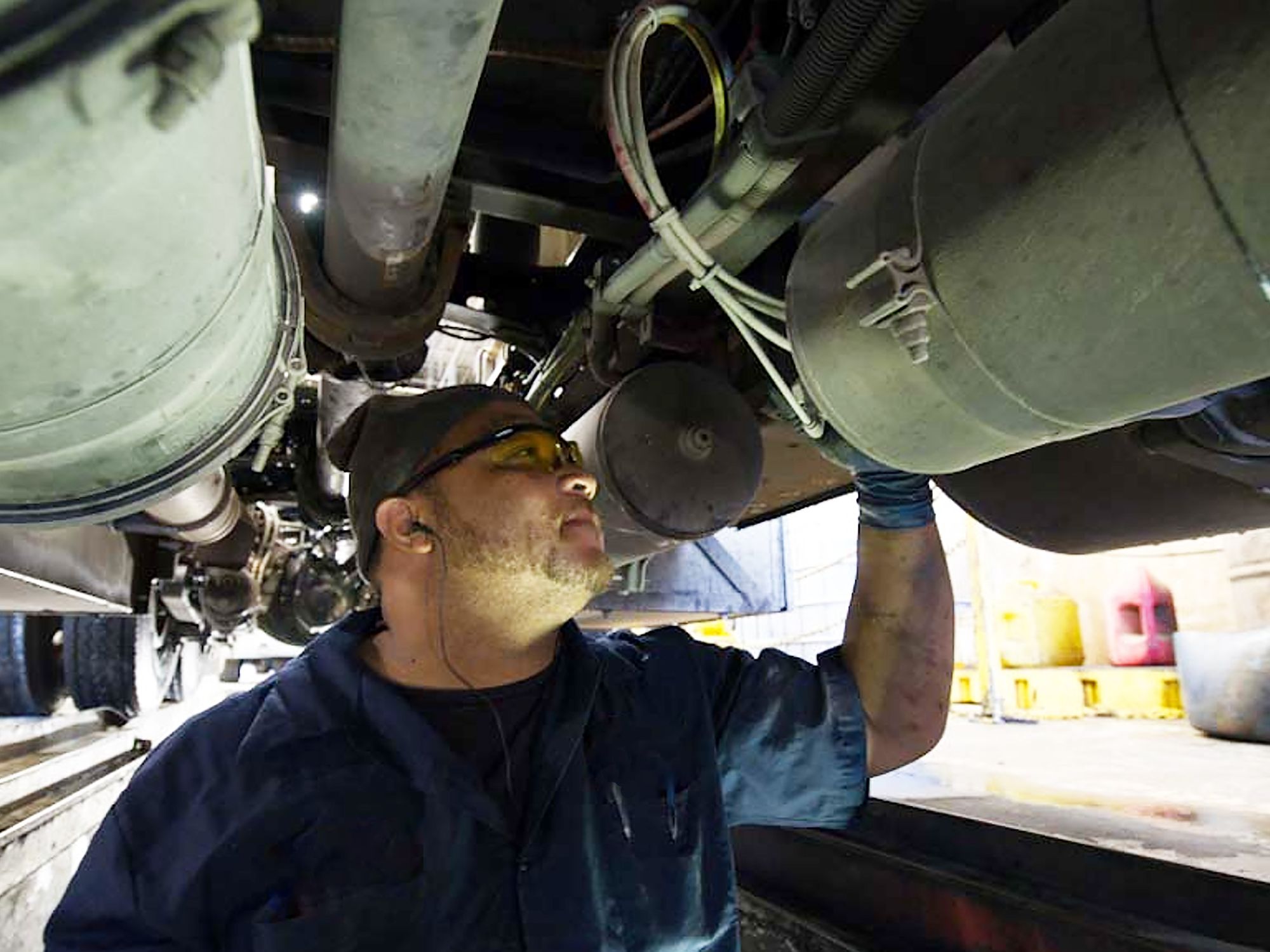Inspection Lane

- An inspection lane can be used to perform PM “A” service inspections or strictly as a screening location to check out driver complaints, body damage, fluid levels and leaks, lights, wipers, springs, brakes, tire tread and pressure, and time or mileage since the last PM.
- A company may require drivers to turn in the DVIR to the technician in the inspection lane, which allows the technician to immediately and officially know if there are any driver-reported defects to address.
- In place of an inspection lane, which may be too cumbersome for some fleets, some companies use “yard checks” during which technicians “cruise the yard” and check newly arrived vehicles for simple items, such as brakes, tires, lights, body damage, and upcoming maintenance requirements.
An inspection lane is a designated lane or shop bay where vehicles entering or exiting (or both) the facility must check in or out. When in the inspection lane a technician will do an inspection on the vehicle. An inspection lane can be used to serve as a location to perform preventive maintenance (PM) A service inspections, if the vehicle is due for one, or it can be used strictly as a screening location.
“Screening location”
In the “screening location” function the technician can check items such as driver complaints, body damage, fluid leaks and levels, lights, wipers, springs, brakes, tire pressures, and time or mileage since the last PM. The vehicle might also be washed quickly. If a problem is discovered, the technician can then communicate the problem to the maintenance supervisor. The vehicle can then be scheduled for repairs or service in the regular maintenance/repair area.
Submission of DVIR
Also, if the vehicle is being checked into the yard, the driver vehicle inspection report (DVIR) can be submitted by the driver to the technician doing the inspection (if required). Drivers must submit a DVIR at the end of the workday if there is a defect on the vehicle. However, for a variety of reasons, many companies require drivers to submit daily DVIRs. The practice of having the driver complete the DVIR in the inspection lane at the end of the day allows the technician to immediately and officially determine if there are any driver-reported defects and triggers action on any needed repairs.
Location of inspection lane
The inspection lane can be located within the shop, but it is more often located in the yard next to the shop because it’s more convenient for the driver to drive through an open area rather than back into or drive into a building. Also, having space available in the yard is more predictable.
Timing of inspections
Timing is the critical element for this kind of inspection. Usually, a vehicle gets inspected every time it enters or exits the yard, so the inspection must be done quickly. Some fleets are very strict about this requirement; a vehicle must run through the lane even though it may have been gone for only a half-hour. If the inspections take too long, it may be difficult to maintain operational support for the inspection lane.
Fleets who use inspection lanes often run time-critical movements, i.e., passengers or food service delivery, and management wants to be sure that vehicles are in top condition every time they are in the terminal.
No repairs in the inspection lane
Maintenance people emphasize that even minor repairs should not be made in the inspection lane. All repairs must be done in the shop and accompanied by the appropriate paperwork, repair order, etc. However, some regular servicing may be scheduled for the lane.
One fleet, for example, greases all trucks during every inspection lane visit. It should also be mentioned that the inspection lane supplements driver inspection and the regular PM inspections; it does not replace them.
“Yard checks”
The inspection lane routine may prove to be too expensive or cumbersome for every fleet. In place of it, some companies use a process of “yard checks.” At specified times throughout the day, technicians will “cruise the yard” and check the equipment that newly arrived in the yard. These checks involve simple items, such as brakes, tires, lights, body damage, and upcoming maintenance requirements. The technician will then record all units in the yard, and what work was done on which vehicles. If a vehicle is found to need major repair or PM during the yard check, the technician will tag the unit as due for maintenance or repair, and then report it to the maintenance supervisor. The vehicle will then be worked into the shop for the needed work.
Other carriers do not use inspection lanes or yard checks at all but rely entirely upon schedules and the drivers reporting to the shop when a vehicle is due for PM or in need of repair.
